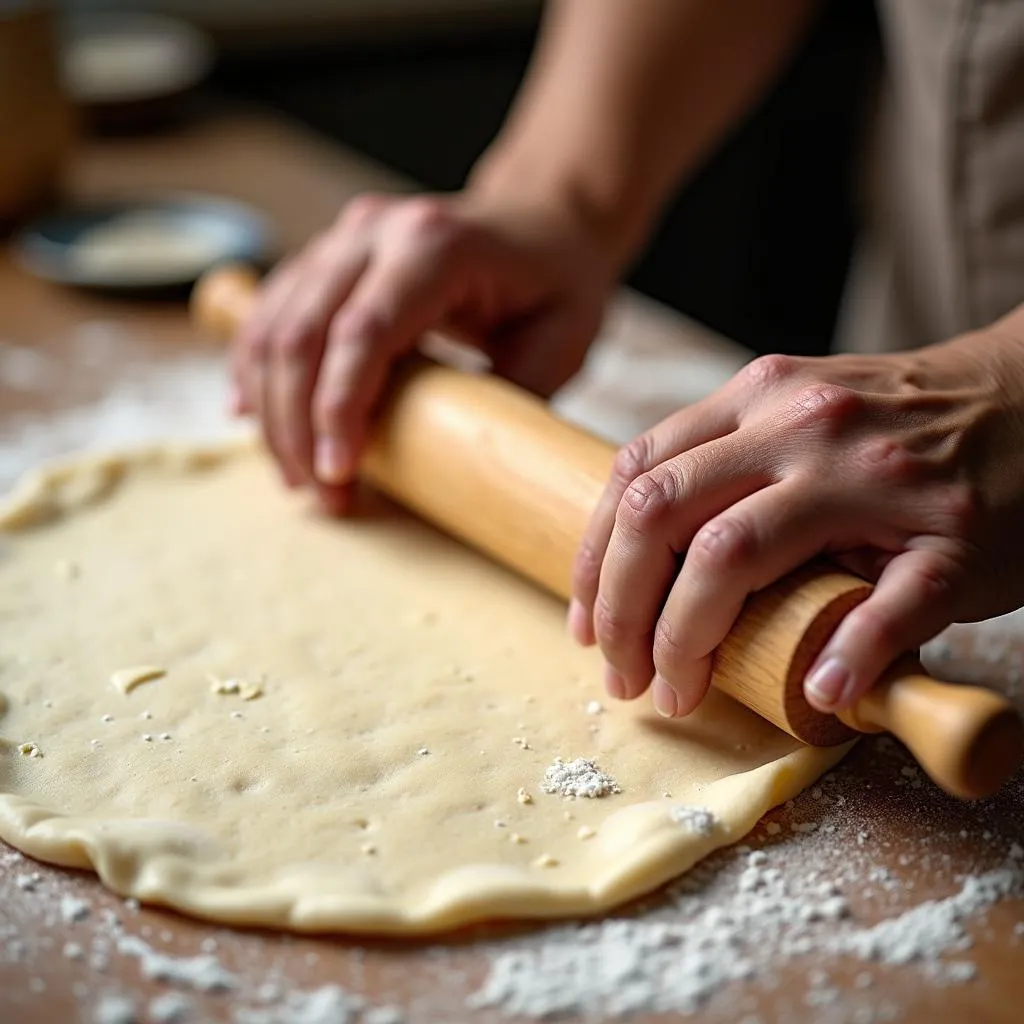The Ultimate Guide to Making Delicious African Chapati
Chapati, the beloved unleavened flatbread, holds a special place in the hearts and on the tables of many African countries. While its origins may lie in the Indian subcontinent, chapati has been wholeheartedly embraced and adapted by African cooks, becoming a staple across the continent. This comprehensive guide will delve into the world of African chapati, exploring its cultural significance, variations, and most importantly, a foolproof recipe to help you recreate this culinary delight in your own kitchen.
A Taste of Africa: More Than Just Bread
 Family Enjoying Chapati
Family Enjoying Chapati
In many African countries, chapati is more than just a food; it’s a symbol of cultural identity and shared heritage. Often enjoyed as part of daily meals or special occasions, chapati brings people together. Its versatility shines through in the myriad ways it’s consumed: served alongside flavorful stews, rolled up with grilled meats and vegetables, or even enjoyed simply with a cup of chai.
From Coast to Coast: Regional Variations
While the fundamental recipe remains similar, African chapati boasts fascinating regional variations. In East Africa, you’ll find chapati cooked on a flat, heavy pan known as a “tawa,” resulting in a slightly chewy texture with beautiful brown spots. West African chapati, sometimes called “Senegalese Flatbread,” tends to be thinner and crispier, often cooked on a lightly oiled griddle. These subtle differences reflect the diversity of culinary traditions found across the continent.
Master the Art of Making African Chapati: A Step-by-Step Recipe
Ready to embark on your own African chapati adventure? This simple recipe will guide you through the process:
Ingredients:
- 2 cups all-purpose flour
- 1/2 teaspoon salt
- 1/2 cup warm water
- 2 tablespoons vegetable oil
- Extra oil for cooking
Instructions:
-
Combine the dry ingredients: In a large bowl, whisk together the flour and salt.
-
Gradually add the water: Slowly pour the warm water into the flour mixture while kneading with your hands. Add a little extra water if needed to form a smooth, pliable dough.
-
Knead the dough: Transfer the dough onto a lightly floured surface and knead for 5-7 minutes until it becomes elastic and no longer sticky.
-
Let the dough rest: Form the dough into a ball, place it back in the bowl, and cover with a damp cloth. Allow it to rest for at least 30 minutes. This allows the gluten to relax, resulting in softer chapati.
-
Divide and roll: Divide the rested dough into equal-sized balls. On a lightly floured surface, roll out each ball into a thin circle, about 6-8 inches in diameter.
 Rolling Chapati Dough
Rolling Chapati Dough
-
Cook to perfection: Heat a flat pan or griddle over medium heat. Place a rolled-out chapati on the hot surface and cook for about 30 seconds on each side, or until lightly browned and puffed up in places.
-
Brush with oil: While the chapati is still hot, brush it lightly with oil or melted butter for added flavor and softness.
-
Serve and enjoy: Stack the cooked chapatis on a plate, keeping them covered with a clean kitchen towel to retain warmth and moisture. Serve them immediately with your favorite African stew, curry, or simply enjoy them plain.
Tips for Chapati Success:
-
Use warm water: Warm water helps activate the yeast in the flour, resulting in softer chapatis.
-
Don’t overwork the dough: Over-kneading can make the chapati tough. Knead until smooth and elastic, then let it rest.
-
Roll evenly: Try to roll the chapatis to a uniform thickness for even cooking.
-
Adjust the heat: Cooking time may vary depending on your stovetop. Adjust the heat as needed to prevent burning.
Beyond the Recipe: Exploring African Cuisine
Making African chapati is just the beginning of your culinary journey. Explore the rich tapestry of flavors and ingredients that define African cuisine. From fragrant spices like berbere and dukkah to hearty stews like peanut soup and tagine, there’s a world of delicious discoveries awaiting you.
Conclusion
African chapati, a testament to the continent’s culinary ingenuity, is a versatile and delicious flatbread that holds a special place in African culture. With this comprehensive guide and easy-to-follow recipe, you can now experience the joy of making and savoring this beloved staple in your own home. So gather your ingredients, embrace the spirit of African cooking, and embark on a flavorful adventure.

